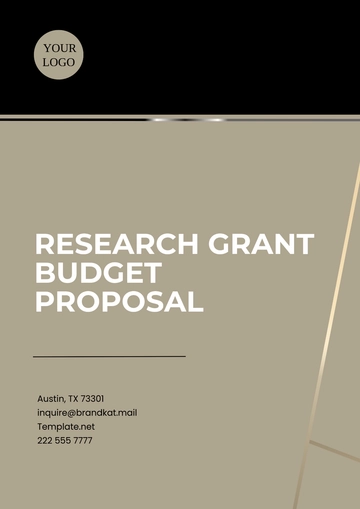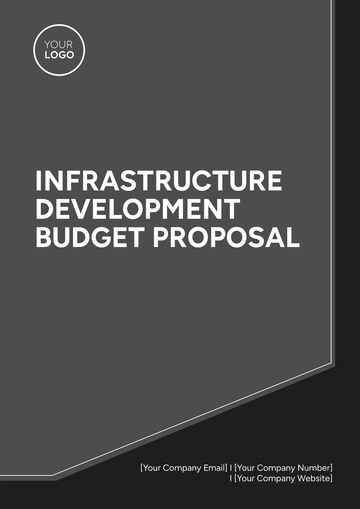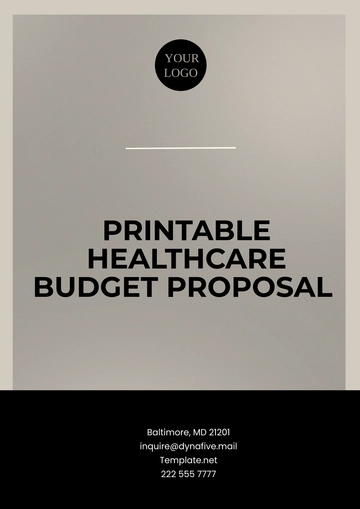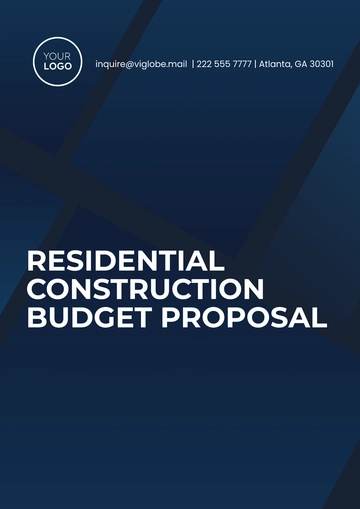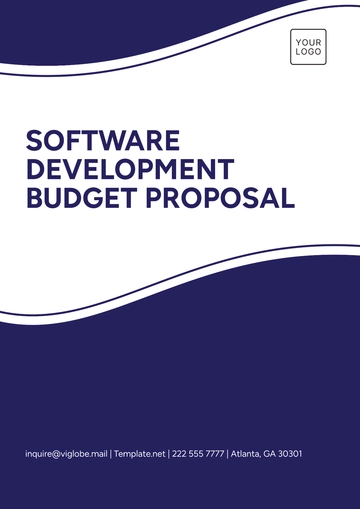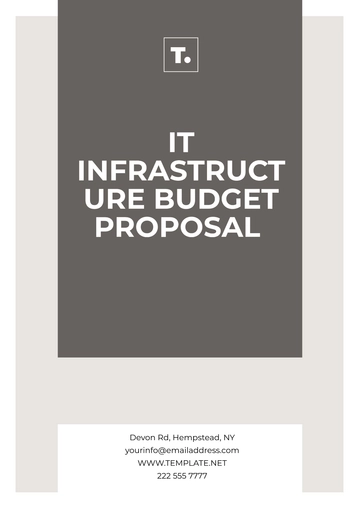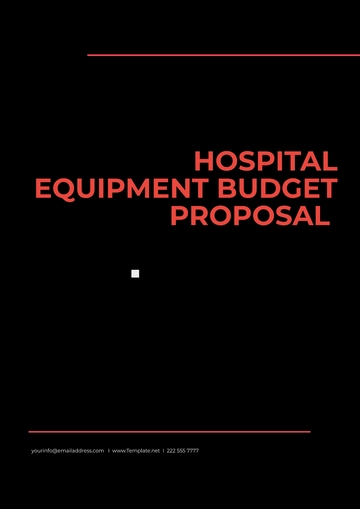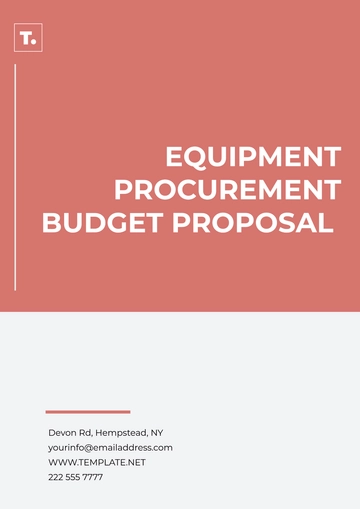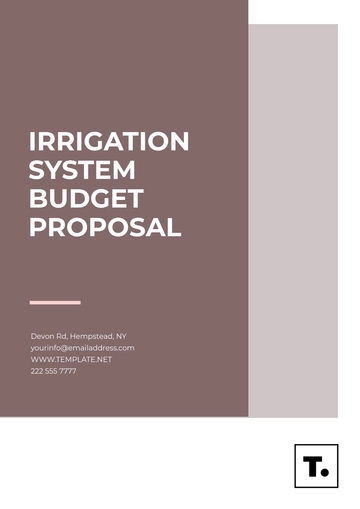Free Finance Budget Adjustment Proposal
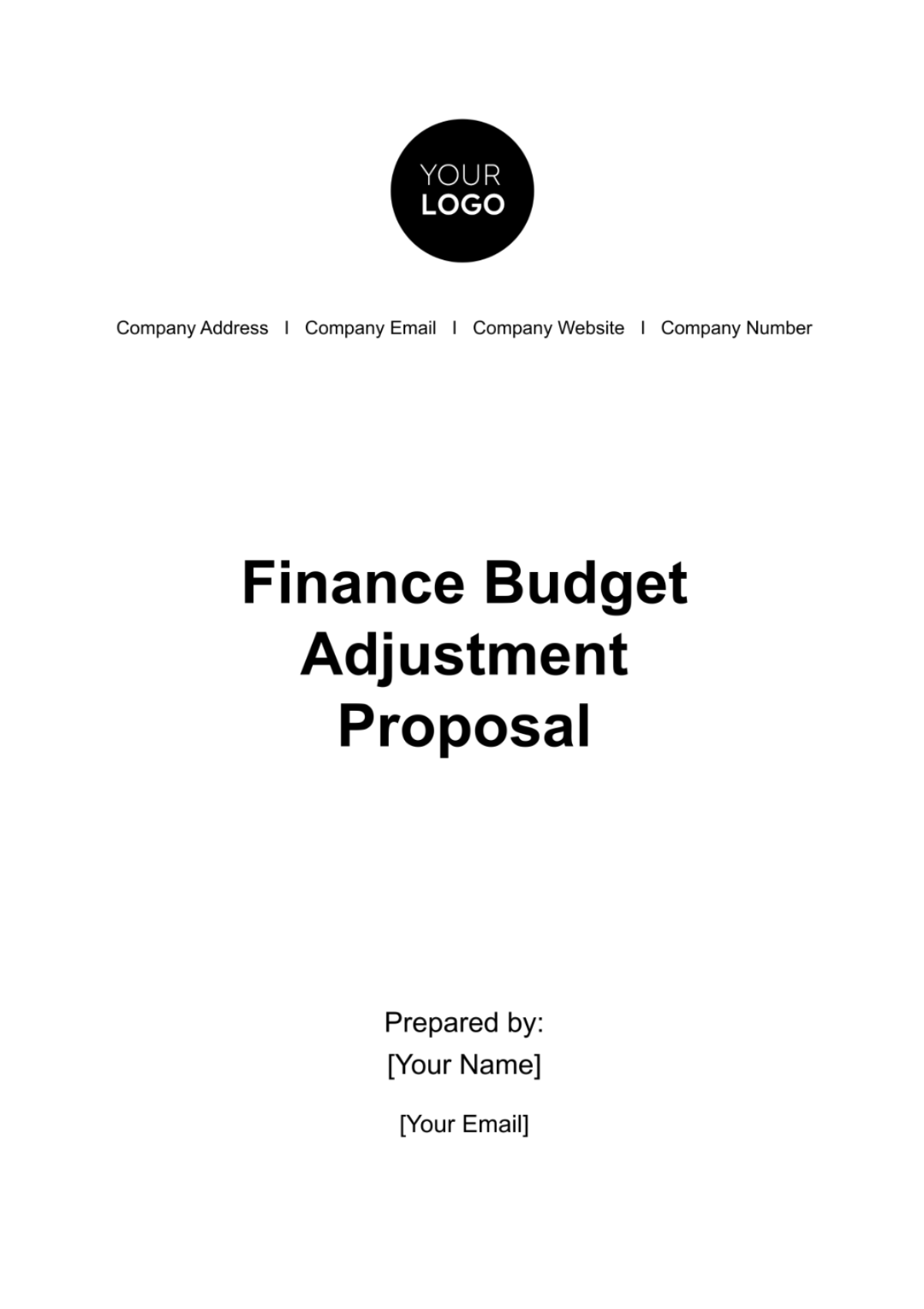
TABLE OF CONTENTS
I. Executive Summary
II. Context and Rationale
A. Analysis of Current Budget
B. Changing Circumstances
C. Rationale for Adjustments
III. Detailed Budget Adjustments
A. Line-item Adjustments
B. Impact Analysis
C. Risk Assessment
IV. Financial Projections and Implications
A. Revised Financial Forecasts
B. Comparison with Original Budget
C. Long-term Financial Implications
V. Implementation Plan and Monitoring
A. Implementation Strategy
B. Monitoring and Reporting
C. Review and Adjustment Mechanism
I. Executive Summary
This proposal seeks to recalibrate [Your Company Name]'s budget to better align with current and projected market realities. Recognizing the need for agility in financial planning, we propose targeted adjustments that address unexpected expenses that have arisen due to market volatility and strategic shifts. By realigning our financial resources, we aim to capitalize on new opportunities that have emerged, ensuring our company remains competitive and financially robust.
Summary of Key Adjustments
The proposal offers a series of calculated budget adjustments in critical areas of operation. A proposed [15%] increase in the marketing budget is intended to amplify our brand presence in emerging digital markets and enhance customer engagement strategies. Conversely, we suggest a [10%] reduction in R&D expenses, achieved through streamlined processes and prioritization of high-impact projects. Additionally, a strategic reallocation of funds towards our digital infrastructure aims to fortify our technological capabilities, ensuring we remain at the forefront of industry innovation.
Expected Outcomes
The proposed budgetary adjustments are anticipated to significantly bolster [Your Company Name]'s market position and financial performance. By increasing our marketing spend, we expect to penetrate new customer segments and increase brand visibility, contributing to an estimated 10% growth in annual revenue. The optimization of R&D spending will ensure that resources are focused on high-value projects, enhancing our innovation pipeline. Investment in our digital infrastructure is projected to yield long-term operational efficiencies, further solidifying our competitive edge in the market.
II. Context and Rationale
In this section, we closely examine the current financial strategy of [Your Company Name], assess how recent market developments have impacted our fiscal plans, and articulate the rationale behind the need for budget adjustments. This evaluation serves as a cornerstone for our strategic financial realignment, ensuring that [Your Company Name] remains agile and responsive to the evolving economic environment, thereby securing its growth and stability.
A. Analysis of Current Budget
The existing budget of [Your Company Name], established at the fiscal year's commencement, was crafted under a set of market assumptions that have since shifted significantly. Initially, this budget adeptly supported our primary objectives and operational requirements. However, as the fiscal landscape evolved, it became evident that our current budgetary framework is no longer fully aligned with the new market realities.
This misalignment necessitates a strategic revision to ensure that our financial resources are optimally deployed. The need for a recalibration of our budget is clear - to not only address these shifts but also to harness potential opportunities that were not anticipated during the initial budget planning phase.
B. Changing Circumstances
Our recent market analysis has brought to light a considerable opportunity in the realm of digital expansion, an aspect that was previously underrepresented in our original budgetary planning. This emerging opportunity presents [Your Company Name] with a potential avenue for significant growth and expansion. To capitalize on this, a reallocation of financial resources towards digital initiatives is imperative.
Furthermore, our analysis has identified potential efficiencies in our Research and Development (R&D) expenditures. By strategically optimizing our spending in this area, we can maintain the quality and output of our R&D efforts while simultaneously enhancing our overall financial efficiency. These changing circumstances are pivotal, demanding a proactive and strategic realignment of our budget to fully embrace these opportunities.
C. Rationale for Adjustments
The proposed budget adjustments are grounded in an extensive analysis encompassing current market trends, internal performance metrics, and projections for future growth. These adjustments are not merely reactive measures to external market pressures but are part of a strategic endeavor to place [Your Company Name] in a position of strength in the face of upcoming opportunities and challenges.
The rationale behind these adjustments is to ensure that we are not only keeping pace with the market but are also proactively shaping our financial strategy to leverage emerging opportunities. This approach balances the need for immediate responsiveness to market changes with the foresight of long-term strategic financial planning. By doing so, we aim to maintain financial discipline while actively pursuing avenues for growth and expansion, thus securing [Your Company Name]'s position as a forward-thinking and adaptable market leader.
III. Detailed Budget Adjustments
In this section, we present a structured approach to the proposed budget adjustments for [Your Company Name], detailing the specific line-item changes, analyzing their impact, and assessing associated risks. This structured format allows for clear visibility and understanding of the adjustments, ensuring a comprehensive evaluation of their implications.
A. Line-item Adjustments
Table 3A: Line-item Adjustments
Category | Description | Impact Analysis | Risk Assessment |
|---|---|---|---|
Marketing Budget | Focus on digital platforms | Enhanced online presence and customer engagement | Risk of underperformance in new marketing strategies |
R&D Expenses | Streamline project management | Optimized spending without affecting core projects | Challenges in project prioritization and execution |
IT Infrastructure | Upgrade to support digital transformation | Improved operational efficiency and support for future growth | Delays in implementation or technology integration |
Increase marketing budget by [15%], focusing on digital platforms.
An additional [15%] will be allocated to the marketing budget, specifically targeting digital platforms. This increase will fund expanded online advertising campaigns, social media marketing, and digital content creation. This shift aligns with the growing trend of digital consumption and the need to have a robust online presence.
The decision to increase the digital marketing budget is based on consumer behavior trends indicating a significant shift towards digital platforms for product discovery and purchases. By capitalizing on this trend, [Your Company Name] can effectively reach a broader and more engaged audience, leading to increased brand visibility and sales conversions.
Reduce R&D expenses by [10%] through more efficient project management.
A [10%] reduction in R&D expenses will be achieved by implementing more efficient project management practices. This includes prioritizing high-impact projects, optimizing resource allocation, and streamlining processes to reduce waste and redundancies.
The reduction in R&D expenses is carefully calibrated to maintain the integrity and output of our R&D department. By focusing on efficiency and strategic prioritization, [Your Company Name] can continue to innovate effectively while managing costs. This approach ensures that R&D remains a cornerstone of our strategy, albeit with a more focused and efficient framework.
Allocate [5%] of the budget to upgrade IT infrastructure.
To support the company's digital transformation and operational needs, [5%] of the budget will be allocated to upgrading the IT infrastructure. This includes investments in cloud computing, cybersecurity enhancements, and modernizing hardware and software systems.
Upgrading the IT infrastructure is a strategic investment to future-proof the company. Enhanced IT capabilities will not only support current operational efficiencies but also provide the necessary foundation for future growth, particularly in digital realms. This investment is critical in maintaining a competitive edge in an increasingly technology-driven business landscape.
B. Impact Analysis
Table 3B: Impact Analysis
Category | Description | Impact Analysis | Risk Assessment |
|---|---|---|---|
Overall Financial Health | Assessment of adjustments on financial stability | Balanced resource allocation leading to improved ROI | Over-reliance on certain strategies or market conditions |
Operational Efficiency | Effect on day-to-day operations | Streamlined processes and enhanced productivity | Potential disruption during implementation phase |
Market Position | Influence on company's market standing | Strengthened market position through effective marketing | Changes in market trends or competitor actions |
By increasing the marketing budget with a focus on digital platforms, [Your Company Name] expects to see a significant improvement in online visibility and customer engagement metrics. This includes higher website traffic, increased social media interactions, and better conversion rates. The investment in digital marketing is strategically positioned to exploit the high ROI associated with digital channels. Enhanced online presence is not just about visibility; it's about building meaningful connections with the target audience, leading to increased brand loyalty and sales.
The reduction in R&D expenses is planned to be achieved without compromising on the quality and output of critical projects. The focus will be on maintaining the momentum of high-value projects while curtailing expenditure on lower-priority initiatives. This approach allows [Your Company Name] to maintain its commitment to innovation and development, ensuring that key projects continue to receive the necessary support while overall spending is optimized.
C. Risk Assessment
Table 3C: Risk Assessment
Category | Description | Impact Analysis | Risk Assessment |
|---|---|---|---|
Marketing Strategy | Efficacy of new marketing initiatives | Regular performance reviews and adjustments based on analytics | Inadequate market research or misalignment with customer needs |
R&D Project Execution | Maintaining quality and innovation in R&D | Close monitoring of R&D projects and flexibility in resource allocation | Misallocation of resources leading to project delays |
IT Infrastructure Integration | Seamless integration of new technology | Proactive management of IT upgrade process | Technical challenges or compatibility issues |
Marketing Strategy Risks: The risk of underperformance in new marketing strategies is countered by implementing a data-driven approach, regularly reviewing campaign performance, and staying adaptable to market trends.
R&D Project Prioritization Challenges: The risks associated with R&D project prioritization are mitigated by establishing clear criteria for project selection, ensuring alignment with company objectives, and maintaining flexibility in resource allocation to respond to changing priorities.
IT Infrastructure Integration Risks: Technical challenges or integration issues with the IT infrastructure upgrade are mitigated through careful planning, partnering with reputable vendors, and phased implementation to ensure minimal disruption and high compatibility.
IV. Financial Projections and Implications
In this section, we delve into the financial projections and implications of the proposed budget adjustments for [Your Company Name]. This analysis includes a revision of our financial forecasts, a comparison with the original budget, and an evaluation of the long-term financial impact. These insights are vital for understanding the broader financial status resulting from the proposed changes and ensuring informed decision-making.
A. Revised Financial Forecasts
With the proposed adjustments, we anticipate a 10% increase in annual revenue for [Your Company Name]. This projection stems from the enhanced focus on digital marketing and the expected increase in market penetration and customer engagement. The reallocation of resources, particularly the reduction in R&D expenses and the investment in IT infrastructure, is expected to lead to a more balanced and efficient use of funds.
These changes are not just about immediate revenue growth; they also aim to improve the Return on Investment (ROI) across various departments. By strategically allocating resources where they have the highest impact, the company is poised to achieve a more robust financial performance, reflecting improved profitability and shareholder value.
B. Comparison with Original Budget
The original budget of [Your Company Name] was more heavily skewed towards R&D, with a relatively modest allocation for marketing. In light of the evolving market dynamics and consumer behavior trends, the revised budget proposes a pivot towards increased marketing expenditure, especially in digital channels, while streamlining R&D costs.
This adjustment is a strategic response to capitalize on digital growth opportunities and optimize spending in areas where we can achieve higher efficiency without compromising on innovation and quality. The revised budget reflects a more agile and responsive approach to market realities, ensuring that our financial resources are being utilized in areas that offer the highest potential for growth and competitive advantage.
B. Long-term Financial Implications
The proposed budget adjustments are designed to position [Your Company Name] for sustainable growth and adaptability in an increasingly dynamic and competitive market. By increasing our investment in digital marketing, we are aligning with the shifting consumer preferences and technological advancements, which are critical for long-term success. Similarly, the optimization of R&D expenses ensures that we continue to innovate effectively while maintaining financial health. The investment in upgrading our IT infrastructure lays the foundation for future scalability and operational efficiency.
Collectively, these adjustments are intended to enhance [Your Company Name]'s market position and financial resilience, ensuring that the company is well-equipped to navigate future challenges and capitalize on emerging opportunities. This forward-looking approach is key to maintaining long-term financial stability and continuing to deliver value to our stakeholders.
V. Implementation Plan and Monitoring
The successful implementation and ongoing monitoring of the proposed budget adjustments are crucial for achieving the desired outcomes for [Your Company Name]. This section outlines a detailed strategy for implementing these changes, establishes a framework for regular monitoring and reporting, and describes the mechanism for periodic review and potential adjustments.
A. Implementation Strategy
The implementation of the proposed budget adjustments will be executed methodically over the next quarter. This phased approach allows for a smooth transition and minimizes operational disruptions. Each department head will be entrusted with the responsibility of managing the changes within their respective areas, ensuring that the adjustments are aligned with departmental objectives and strategies.
The finance team will play a critical oversight role, providing guidance, support, and ensuring that the adjustments are in line with the overall financial strategy of [Your Company Name]. Key to this process will be effective communication and collaboration across departments to ensure a unified approach to the budget changes. Training and support will be provided to all relevant staff to equip them with the necessary skills and knowledge to manage these adjustments effectively.
B. Monitoring and Reporting
To gauge the effectiveness of the budget adjustments and ensure accountability, a rigorous monitoring and reporting system will be established. Financial reviews will be conducted monthly, focusing on key performance indicators, variance analysis, and the overall impact of the budget adjustments.
Additionally, a comprehensive report detailing the financial performance and the impact of the budget adjustments will be presented to the board of directors quarterly. This report will include both quantitative and qualitative analyses, offering a holistic view of the company's financial health and the success of the implemented changes.
C. Review and Adjustment Mechanism
Recognizing the dynamic nature of our business environment, the budget will undergo a semi-annual review. This process will evaluate the effectiveness of the budget adjustments in meeting the company's financial and strategic objectives. It will also assess the company's performance in the context of the prevailing market conditions.
Based on this review, further budget adjustments may be proposed to ensure that [Your Company Name] remains agile and responsive to changes in the market and internal performance metrics. This flexible approach allows for continuous refinement of our financial strategy, ensuring that the company remains on a path to sustainable growth and financial stability.
- 100% Customizable, free editor
- Access 1 Million+ Templates, photo’s & graphics
- Download or share as a template
- Click and replace photos, graphics, text, backgrounds
- Resize, crop, AI write & more
- Access advanced editor
Maximize financial control with Template.net's Finance Budget Adjustment Proposal. This editable, customizable template boasts a user-friendly design, editable in our Ai Editor Tool ensuring ease of use. Drive optimal budgetary decisions today. Make fiscal efficiency achievable. Embrace your financial future with confidence and precision.
You may also like
- Business Proposal
- Research Proposal
- Proposal Request
- Project Proposal
- Grant Proposal
- Photography Proposal
- Job Proposal
- Budget Proposal
- Marketing Proposal
- Branding Proposal
- Advertising Proposal
- Sales Proposal
- Startup Proposal
- Event Proposal
- Creative Proposal
- Restaurant Proposal
- Blank Proposal
- One Page Proposal
- Proposal Report
- IT Proposal
- Non Profit Proposal
- Training Proposal
- Construction Proposal
- School Proposal
- Cleaning Proposal
- Contract Proposal
- HR Proposal
- Travel Agency Proposal
- Small Business Proposal
- Investment Proposal
- Bid Proposal
- Retail Business Proposal
- Sponsorship Proposal
- Academic Proposal
- Partnership Proposal
- Work Proposal
- Agency Proposal
- University Proposal
- Accounting Proposal
- Real Estate Proposal
- Hotel Proposal
- Product Proposal
- Advertising Agency Proposal
- Development Proposal
- Loan Proposal
- Website Proposal
- Nursing Home Proposal
- Financial Proposal
- Salon Proposal
- Freelancer Proposal
- Funding Proposal
- Work from Home Proposal
- Company Proposal
- Consulting Proposal
- Educational Proposal
- Construction Bid Proposal
- Interior Design Proposal
- New Product Proposal
- Sports Proposal
- Corporate Proposal
- Food Proposal
- Property Proposal
- Maintenance Proposal
- Purchase Proposal
- Rental Proposal
- Recruitment Proposal
- Social Media Proposal
- Travel Proposal
- Trip Proposal
- Software Proposal
- Conference Proposal
- Graphic Design Proposal
- Law Firm Proposal
- Medical Proposal
- Music Proposal
- Pricing Proposal
- SEO Proposal
- Strategy Proposal
- Technical Proposal
- Coaching Proposal
- Ecommerce Proposal
- Fundraising Proposal
- Landscaping Proposal
- Charity Proposal
- Contractor Proposal
- Exhibition Proposal
- Art Proposal
- Mobile Proposal
- Equipment Proposal
- Student Proposal
- Engineering Proposal
- Business Proposal








